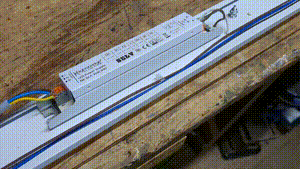Hi All, Hope you're all well!
My LED strip lighting just decided to crap out and now, very consistently, strobe as per the attached gif.
The components inside the power supply all look fairly straight-forward to me bar the SMD led driver (BP3319MB) on the bottom-side of the PCB.
I swapped out the SIF10N65C mosfet in a straw-clutching moment with a near-as-damn-it equivalent but the disco continues. The caps all measure ok and I can't see anything else obvious.
Anyone have any experience / ideas on what this could be? They're not expensive to replace but feels like this could be something fixable.
Thanks in advance!




 Recent Posts
Recent Posts
